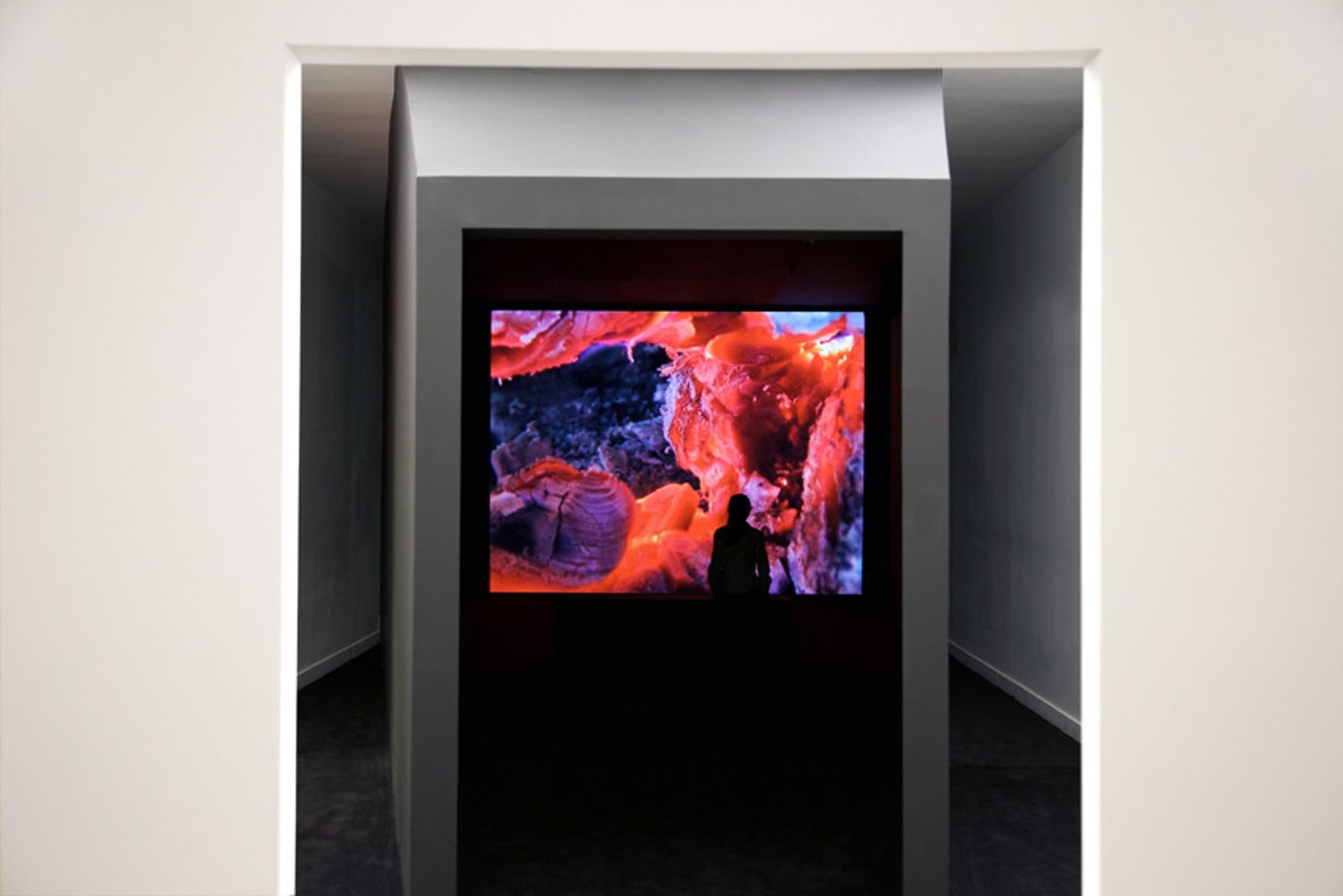The French artist Laure Prouvost’s current exhibition at e-Flux in New York (It, Heat, Hit, until 26 October), opens with a subtitled explanation: “This six minute film requires all of your attention. Each detail of Part One will be essential to Part Two. The characters in the film are glad you are here to join them; they would do anything to get your attention. They are desperate for you to engage: they need you to exist. If you do not collaborate they will ask you to leave the room on the sixth minute.”
The work makes demands, as do many of Prouvost’s videos: you must concentrate, engage, exist. You must create your own system of viewing. You must respond to the work in all the different registers in which it constantly challenges you: visual, textual, audio. But when you listen to the voiceover, it doesn’t match the text on the screen. You watch the images and they escape too quickly, evaporating like a drop of water on a hot surface. You read the text and it’s beautiful—“the images got dusty from waiting”—but inexplicable. The threat is then realized: six minutes in and you’re asked “Can you leave this…?” “Room” is left unsaid.
Prouvost’s work is so specific that it’s almost impossible not to adopt some of its linguistic manners. You start writing in “you.” You get a little convoluted. You want to race through certain sentences and then slow down with others. You wonder about whether it’s worth adding more writing to a work already loaded with words. Prouvost, an artist known for her large-scale installations, which often include video and architectural constructions strewn with objects, always speaks to language and its inability to contain meaning.

Her work isn’t about consistent storytelling or collected ideas. Instead, it’s a system of frustrated representation; it has a slippery meaning. It conflates environment with sound, image, and text (often read by Prouvost in a feminine French accent) but the connections are constantly shifting. With It, Heat, Hit, the viewer is bombarded with images: a car racing to a corner, a splash of red paint, a flabby green pudding on a white plate, a jumping horse, a fire. The film is interspersed with white text against a black background (“In his anger the images were burning” and “back home”) that doesn’t cohere to a narrative. Instead, it forms a reflection on the impossibility of coherent narratives. “You want to caress the image,” the voiceover in the video lingers, but how can you caress what you cannot grasp?
Considering how prolific Prouvost is—she has created at least ten large-scale, complex installations since earning her MFA from Goldsmiths University in London in 2010—the choice to show a five-year-old piece (It, Heat, Hit is dated 2010) seems puzzling. But with Prouvost, Goddard’s famous declaration—“a story should have a beginning, a middle and an end, but not necessarily in that order”—rings true. Iterations of the same work include additions and other changes. When It, Heat, Hit was shown at the Taipei Biennial in 2014, it was screened in a specially-built diagonal room surrounded by plants and sculptures (some of which are recognizable from earlier installations like The Artist, 2011). At e-flux, the black-box construction almost fills the entrance of the gallery to the brim, but the installation around it is gone—no living things, no sculptures dangling from the ceiling—and has been replaced with eight framed texts, each written by a different professional (a rector, an ironmonger, etc.). Each was asked to watch the video and respond to it, creating yet another narrative and another set of response to the work. Again meaning is slippery, again it is individual.
It, Heat Hit keeps with Prouvost’s earlier interests in complex, disconnected narrative. In Before, Before (2011–13), she created a maze of stage sets through which the viewer wanders in search of Gregor Samsa from Franz Kafka’s The Metamorphosis until ending up in a new installation, After, After (2013), which the artist described as “a different kind of 3D film,” a darkened room where flashes of light shine on different objects to create a story by way of sequence. The two works do not congeal, except in language. “Before” and “after” connote linearity, a coherence that is never present.

Prouvost’s work is messy, funny and playful, but it is also always serious. It adds another line to the long history of image literacy. It feels contemporary because it’s fast: in It, Heat, Hit, the shifts between scenes can take just one second. Images wash over you while you’re still decoding what the voiceover said. This aesthetic is exactly the meaning of her work. It shows how images, sounds, words—even when you try to hold onto them—are evasive. Prouvost offers a very different suggestion from the prevailing sentiment that images are meant to be decoded, that pictures are meant to be read.
Orit Gat is an art critic living in London and New York. She is a contributing editor of Rhizome and the managing editor of WdW Review.
Laure Prouvost: It, Heat, Hit, e-flux, New York, until October 24, 2015

